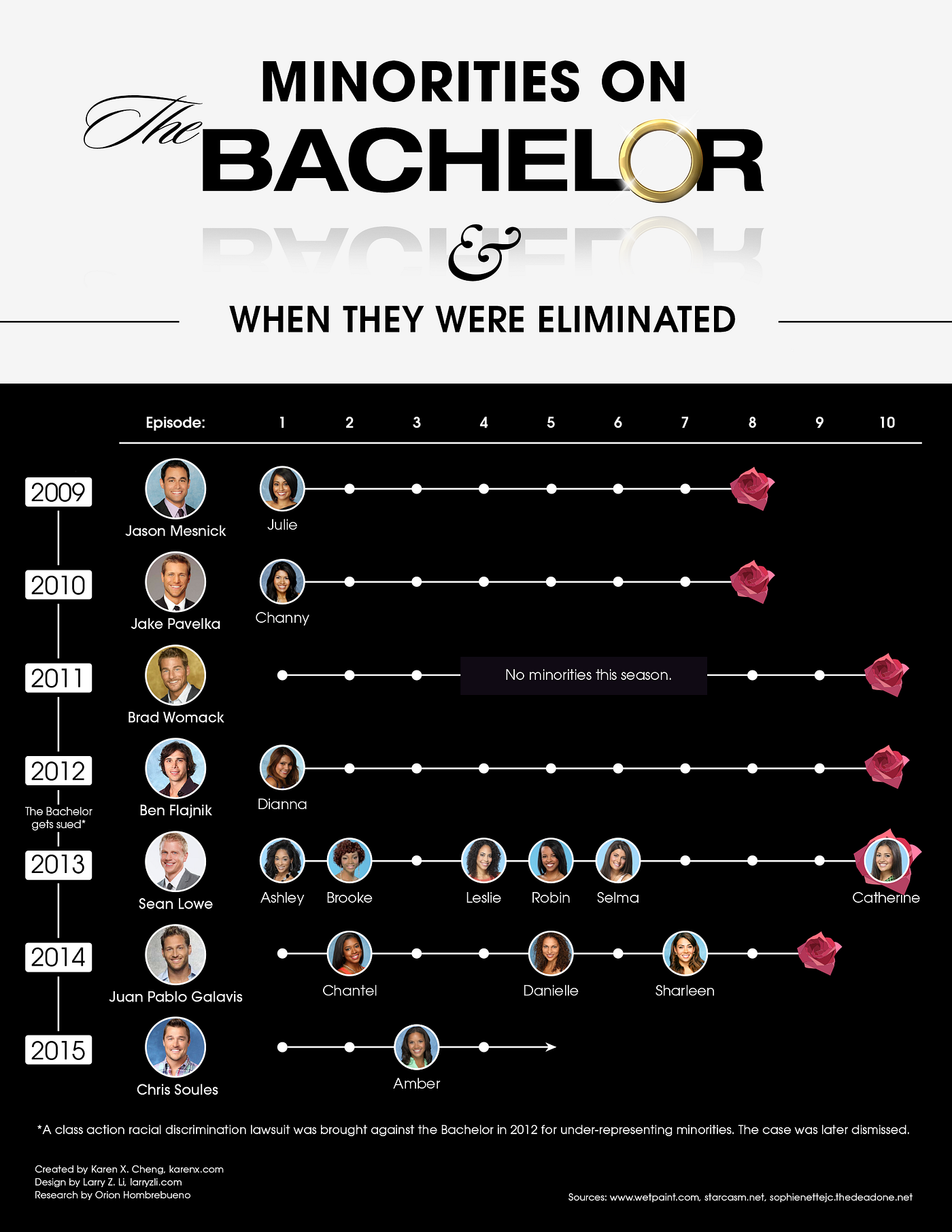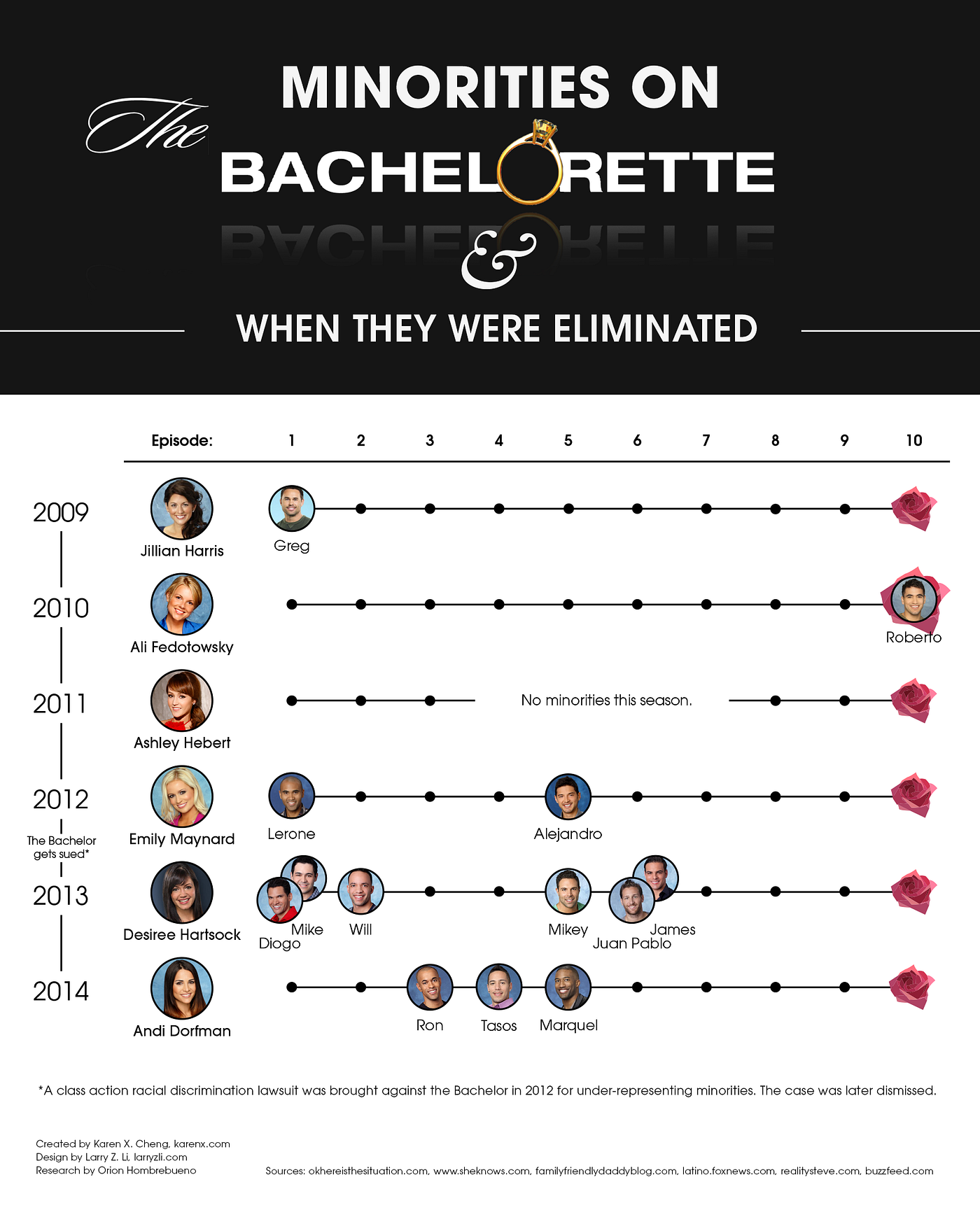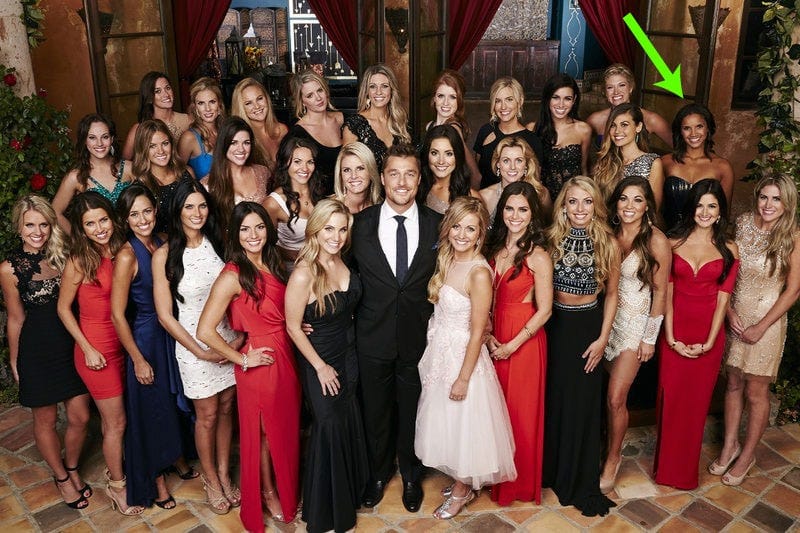
By Jessica Saia
There is a weird, rose-petal scented place in my heart for ABC’s Bachelor franchise. Eight of us get together every Monday night to drink rosé (duh) and spend up to three hours watching that week’s episode. I’m not so much ashamed for my love of “Batchy” as I am conflicted, because this show has got it all when it comes to problematic issues and themes. Race takes a huge slice in the Wheel of Bachelor Problems; minority contestants are few and far between, they barely get any air-time, and they are pretty consistently eliminated early (but not TOO early; SNL just covered the “week two” phenomenon in this “Farm Hunk” sketch.)
The sole minority contestant this season, Amber, was eliminated last week (week three), and while, sure, there could be a lot of factors contributing to her departure that aren’t about race, it’s interesting to step back and look at the trends when it comes to minorities on The Bachelor. Karen Cheng compiled data on the Bachelor/ette’s minority contestants from 2009, and plotted which weeks in which they were eliminated on graphs designed by Larry Li.

Cheng explains in a post about the infographic, “I expected to see 1 or 2 minorities every season, quickly eliminated in the first week or two. And that’s the trend up until 2012 — just one minority per season, eliminated early on. And not a single minority in Brad’s season.
But to my pleasant surprise, all that changes in 2013. Sean Lowe’s season has a record 6 minorities. And one of them won — Catherine is half-Filipino. Juan Pablo’s season has a good showing too, with 3 minorities who made it pretty far.”
Good, right? Or at least … better? She wondered if maybe the show just innocently asks each Bachelor/Bachelorette their preferences, and the contestant pool reflects that. (Ignoring that in TWENTY NINE seasons, we’ve never seen a minority bachelor or bachelorette star, although considering that each new star is chosen from the previous season, it’s kind of a catch 22.) However, when Cheng compared the Bachelor version of the chart to the Bachelorette version, she found the similarities interesting:

“Again, the trend changes in 2013,” Cheng writes, “and Desiree’s season also has 6 minorities. Coincidence? I’m no producer on the show, so I couldn’t tell you why for sure, but here’s one hypothesis:
In 2012, a class action racial discrimination lawsuit was brought against The Bachelor for under-representing minorities. A judge later dismissed the case, citing it was the show’s First Amendment right to cast whomever they wanted.”
It IS weird, or maybe just dishearteningly expected, that the number of minorities would surge after a (failed) lawsuit, and then die back down to just one minority contestant this season (from what I can ignorantly gather, not knowing how each of the women in this cast identify.)

Seeing what was already so obvious laid out into neat charts is frustrating. And beyond frustrating, it just blows my mind that a show could have nearly 30 seasons and not even humor us with diversity.
Got a tip for the Bold Italic? Email tips@thebolditalic.com.







